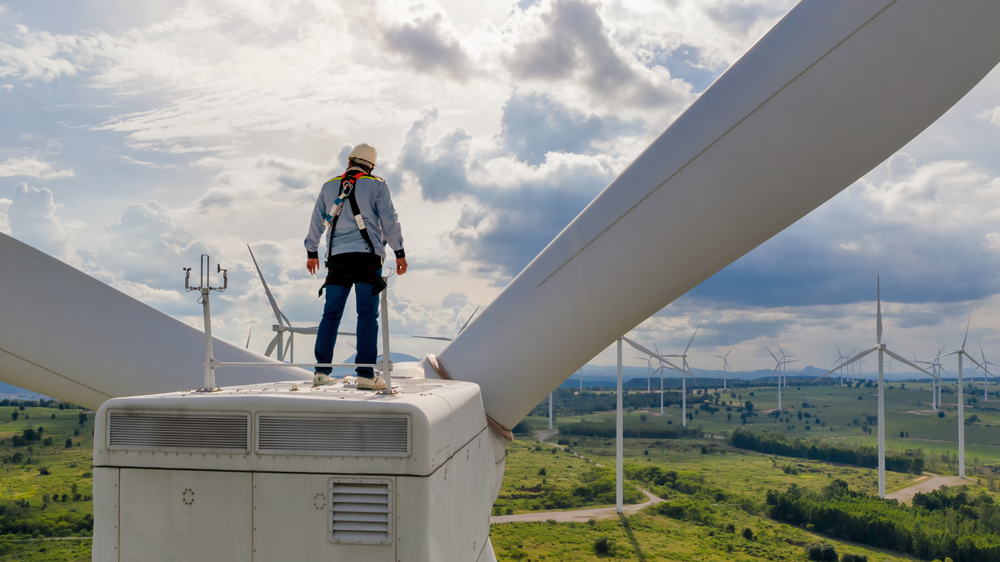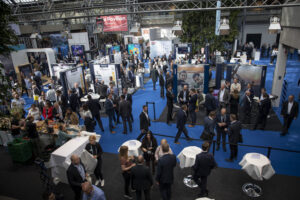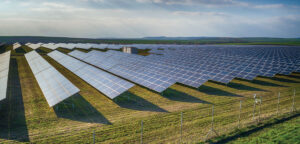A range of courses to qualify competent person and more...
The wind energy sector is one of the fastest-growing renewable energy industries worldwide, requiring a dedicated workforce trained to perform high-risk tasks. To ensure the safety of these workers, especially those involved in maintenance, inspection, and construction, the industry has established Competent Person training programs tailored to the specific challenges faced by wind energy professionals. These programs provide essential training for workers who perform work at height, in confined spaces, and in complex rescue scenarios. Below, we’ll discuss each major component of Competent Person training in the wind energy sector, covering confined space awareness, PPE and device inspection, fall protection and climber training, evacuation and self-rescue techniques, and advanced rescue operations.
1. Confined Space Awareness
The internal structure of wind turbines presents unique challenges related to confined spaces. Turbine nacelles, towers, and foundations can be tightly enclosed, with limited entry and exit points. In these environments, workers may be exposed to risks such as poor ventilation, low oxygen levels, and potentially hazardous chemicals.
Competent Person training in confined space awareness includes:
Hazard Recognition: Trainees learn to identify hazards specific to wind turbine confined spaces, including electrical equipment, hydraulic systems, and hazardous materials such as lubricants and coolants.
Atmospheric Testing: Since confined spaces in wind turbines may be poorly ventilated, workers are trained to use gas detectors to assess air quality. Competent Persons are skilled in using multi-gas detectors to test for oxygen, combustible gases, and toxic substances, ensuring the environment is safe for entry.
Permit-Required Spaces: Certain confined spaces within wind turbines may require a permit for entry. Competent Persons are trained to identify when a permit is necessary, and how to enforce permit requirements, which include documenting the hazards, listing required PPE, and designating a standby person for assistance.
Understanding the risks and procedures associated with confined spaces is crucial for wind turbine workers, as it ensures that all confined space operations are conducted safely and within regulatory compliance.
2. Competent Person Equipment (PPE and Device Inspection)
PPE and device inspection are critical for wind turbine workers, who rely on safety gear to protect themselves in various operational scenarios. Competent Persons play an essential role in ensuring all equipment is maintained and ready for use. This training module includes:
PPE Selection and Inspection: Workers in wind energy are exposed to extreme weather conditions, so the PPE must be suited for these environments. Competent Persons are trained to inspect helmets, gloves, eye protection, hearing protection, and flame-resistant clothing for any signs of wear, damage, or contamination that could reduce effectiveness.
Fall Protection Devices: Devices such as self-retracting lifelines, harnesses, and lanyards are essential in the wind sector. Competent Person training includes the inspection and maintenance of these devices, ensuring that stitching, metal components, and mechanical systems are free from damage. They also learn proper storage and care techniques to prevent unnecessary wear and tear.
Certification and Compliance: PPE and fall protection devices must meet stringent industry standards set by organizations like OSHA, ANSI, and ASTM. Competent Persons are trained to verify that each piece of equipment meets certification requirements and has up-to-date inspection tags.
Proper inspection and maintenance of PPE and safety devices are fundamental to preventing accidents and ensuring the safety of wind energy workers, as they often work at great heights and in remote locations.
3. Competent Person Fall Protection and Climber Training
Wind turbines present a range of fall hazards due to their height and structural design. Competent Person training for fall protection and climber safety is specifically tailored to the wind energy environment, covering essential techniques and safety practices:
Fall Hazard Identification: Competent Persons are trained to identify fall hazards within a wind turbine’s tower, nacelle, and rotor blades. This includes recognizing hazards associated with ladder systems, transition areas, and open edges. Trainees also learn to assess the risk of falls during specific tasks, such as blade repair or nacelle maintenance.
Fall Protection Systems: Trainees receive hands-on experience with various fall protection systems used in wind energy, including fixed ladder systems, anchor points, and fall arrest devices. They are trained to select the appropriate equipment for each scenario and to ensure it is set up correctly before use.
Climber Training: Climbing a wind turbine tower can be physically demanding, and it requires workers to manage their own safety equipment while ascending or descending. Competent Persons learn advanced climbing techniques, how to use climb-assist systems, and how to handle tools safely while climbing. They are also trained in proper body positioning and ergonomics to reduce fatigue and prevent accidents.
Competent Person training in fall protection and climber techniques is indispensable for maintaining safety and confidence in workers who regularly climb turbine towers.
4. Evacuation & Self-Rescue for Height Workers (Solo X/Other)
Self-rescue skills are essential for workers in the wind industry, especially given the isolated and elevated nature of their work. Competent Person training in evacuation and self-rescue enables workers to safely evacuate from height without external assistance if needed. This training includes:
Solo X and Similar Devices: Solo X and similar self-rescue devices allow workers to descend safely in case of an emergency. Competent Persons learn how to properly deploy these devices, control their descent, and safely land on the ground.
Controlled Descent Techniques: Competent Persons are trained in the mechanics and safety considerations of controlled descent, ensuring they can guide their descent smoothly without risking injury. Training includes handling wind conditions, obstacles, and varying descent speeds.
Emergency Preparedness: Preparing for an evacuation is as important as executing one. Competent Persons learn to plan and practice evacuation drills with their teams, ensuring all workers are familiar with self-rescue procedures and know how to remain calm and focused in an emergency.
Self-rescue training ensures that wind energy workers are prepared for unexpected situations, providing them with the skills and confidence to evacuate safely in emergencies.
5. Evacuation & Advanced Rescue for Height Workers (Red Pro/Other)
In addition to self-rescue, advanced rescue techniques are essential for rescuing incapacitated workers. Competent Person training in advanced rescue techniques is critical in the wind energy sector, where access to external emergency services may be limited. This training focuses on equipment and skills necessary for complex rescue scenarios.
Red Pro and Advanced Rescue Devices: Red Pro and similar advanced rescue devices allow rescuers to perform complex lifts, lowers, and controlled extractions. Competent Persons learn to operate these devices, ensuring they can handle the mechanics and safely execute rescues with minimal risk to the rescuer and the victim.
Rescue Techniques for Incapacitated Workers: Competent Persons are trained in methods for rescuing workers who may be unconscious or unable to assist in their own rescue. This includes securing the victim, maneuvering around obstacles, and coordinating with ground teams.
Team Coordination and Communication: Rescue operations require precise teamwork and clear communication, especially in high-stress situations. Competent Persons learn how to coordinate with team members, assign roles, and maintain constant communication throughout the rescue to ensure everyone is on the same page.
Advanced rescue training is vital for wind energy workers, as it enables Competent Persons to respond to emergencies effectively, ensuring the safety of both the rescuer and the worker in distress.
Conclusion
Competent Person training tailored to the wind energy sector plays a critical role in ensuring worker safety in this high-risk industry. The skills acquired through this training cover all aspects of confined space awareness, PPE and device inspection, fall protection, climber safety, and both self and advanced rescue techniques. These competencies empower workers to identify and mitigate risks, respond effectively to emergencies, and perform their jobs with confidence. Given the rapid growth of the wind energy sector, Competent Person training is not only essential but also an ongoing commitment to ensuring safety standards evolve alongside the industry’s technological advancements.
Book your training now
Click the button to submit your enquiry



